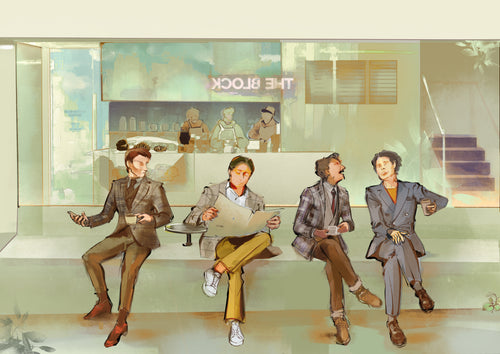The Art of Making a Suit: From Wool to Perfection


Suits are more than clothing—they’re a symbol of elegance, craftsmanship, and timeless style. Whether for a corporate presentation, your wedding, or simply embracing sophistication, a suit carries unique prestige. But have you ever wondered what goes into making the perfect fit?
Creating a suit is an art, involving hundreds of precise steps. This blog explores the process, from material selection to the skilled hands that bring it to life. By the end, you’ll have a new appreciation for the craftsmanship in every stitch and seam.
The Foundation of a Suit
One of the first steps in suit-making—and arguably one of the most important—is selecting the right fabric. While there are numerous materials to choose from, wool is the gold standard for its versatility, durability, and natural qualities.
Wool’s unique properties make it an ideal material for suits:
Many suits are crafted using wool sourced from sheep, often collected during the spring or early summer shearing season. Once the raw material is obtained, the transformation begins—a painstaking process of spinning and weaving to create fabric worthy of a tailor’s scissors.
From Sheep to Fabric
Creating the fabric is a multi-step process that requires tremendous skill, precision, and attention to detail. Each phase, from selecting the right raw materials to weaving and finishing, plays a crucial role in ensuring the fabric's texture, durability, and overall quality. Here’s how fabric production lays the groundwork for a quality suit, setting the foundation for craftsmanship and style:
Sheep shearing is the first step in collecting wool. Farmers harvest the fleece, which is then cleaned, combed, and prepared for spinning. The shearing process is carefully timed—typically during spring or summer—to ensure animal welfare.

The wool fibers are spun into yarn using techniques designed to enhance durability and texture. The spinning process determines yarn thickness, strength, and softness—all of which contribute to the fabric’s personality.

Once spun, the yarn is woven into fabric using different patterns and styles, such as twill or plain weave. The weaving process helps establish the fabric’s texture and weight, making it suitable for different suit designs and seasons. Some fabrics feature tighter weaves for formal wear, while looser weaves work better for lightweight or casual suits.
At this stage, the raw wool has already undergone a transformational journey—but it’s just the beginning of creating the suit you see hanging in your wardrobe.

From Fabric to Masterpiece: The Suit-Making Process
Turning fabric into a sophisticated suit involves a series of intricate steps, requiring exceptional skill and collaboration among different artisans. Experts estimate that more than 260 steps are involved in crafting a single suit!
Here’s how the magic happens:
The creation of a suit starts with precision. A fitter takes detailed measurements of the customer’s body, accounting for posture, body shape, and unique proportions. This is more than just numbers—it’s an art that involves translating a person’s physique into data that a tailor can interpret.

The cutter takes the measurements from the fitter and drafts a custom pattern. This pattern serves as the blueprint for the suit, ensuring every piece of fabric aligns perfectly. The cutter’s role is critical—they decide how the fabric will be shaped to achieve both functionality and style.

Once the fabric pieces are cut, they are handed over to highly skilled sewers. Each piece is carefully stitched together using techniques handed down through generations. Many luxury suits are sewn entirely by hand, as hand stitching allows greater precision and flexibility than machine stitching.

After the suit is sewn, it moves to the presser, whose job is to ensure every seam is sharp and every fold lies perfectly. Pressing is crucial in giving the suit its polished, professional look.

A suit isn’t just the result of a single artisan’s hard work—different experts contribute their unique skills to create a garment that fits perfectly and lasts for years. Every adjustment, every thread, and every buttonhole is crafted with care and precision.
When you see the finished product, it may be hard to imagine the hundreds of steps and hours of labor that went into making it. From shearing sheep to the final pressing, every aspect of the process is driven by dedication to quality and craftsmanship.
Once you understand the incredible effort behind making a suit, it’s easier to see why a well-made one deserves a premium price tag. The next time you pull on a suit jacket or admire yourself in a perfectly tailored outfit, know that it represents more than just fabric—it’s a work of art.
At our store, we take pride in offering suits that not only look great but also tell a story. Take a moment to appreciate the craftsmanship next time you wear one, and understand the true value you're getting with every purchase.
From the first gleaming blades of a sheep shearer to the precise cut of a tailor’s scissors, creating a suit is an extraordinary process. It involves more than 260 steps, countless hours of work, and the expertise of skilled artisans to perfect.
If you’re ready to experience the difference of a suit made with attention, care, and craftsmanship, we’d love to help. Visit us today to find the perfect suit for your wardrobe—or allow us to tailor one just for you.
Because a suit isn’t just clothing. It’s confidence, style, and a timeless statement.